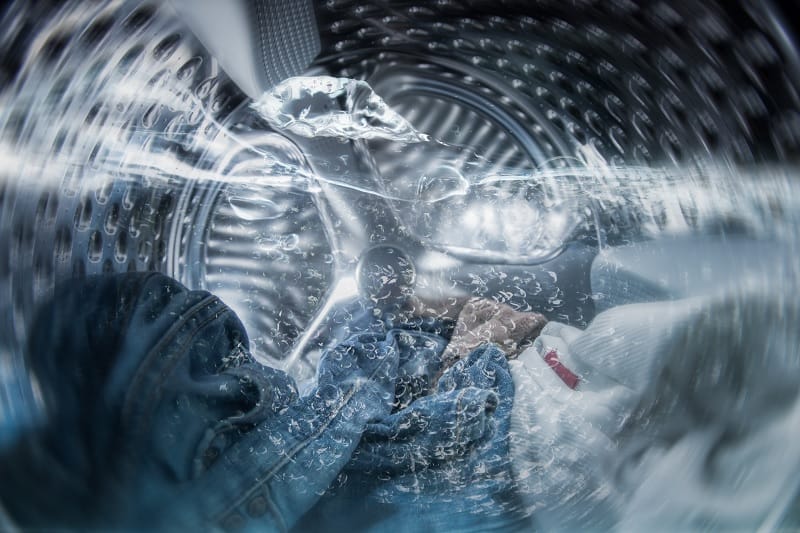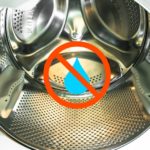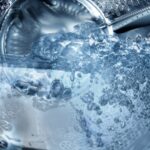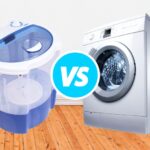Water is the most precious resource on our planet, and it’s essential for human survival. But the fresh, clean water that we need isn’t an endless resource.
We’re now using fresh water supplies faster than ever before, so it makes sense for us all to do our best to try and reduce how much water we consume in our homes.
On a personal level, saving water also saves us money. Over 60% of UK homes now have a water meter installed, where customers are billed for the amount of water used.
Even if you don’t have a water meter, you will still pay local utility charges, and the greater the demand for water, the greater the price.
How Much Water Does a Washing Machine Use?
In the past, washing machines could use a staggering 150 litres of water per cycle – that’s almost as much water as most people now use in an entire day (146 litres according to Statista).
The good news is that this has reduced significantly due to advances in technology in the last 20 years.
We looked at 60 of the most popular washing machines on the market in the UK, and found that the average washing machine uses 48.6 litres per cycle.
See the data below:
| Model | Drum capacity (kg) | Energy rating | Litres per cycle | Litres per kg capacity |
|---|---|---|---|---|
| AEG 6000 Series ProSense LFX6G7434BI | 7 | B | 44 | 6.29 |
| Hotpoint Anti-Stain NSWR 7469 WK UK | 7 | A | 45 | 6.43 |
| Hotpoint BI WMHG 71483 UK N | 7 | D | 44 | 6.29 |
| Hotpoint BIWMHG71483UKN | 7 | D | 49.3 | 7.04 |
| Indesit BI WMIL 71252 UK N | 7 | E | 44 | 6.29 |
| Logik T-series LIW712W22 | 7 | D | 45 | 6.43 |
| Sharp ES-NIH714BWA-EN | 7 | A | 45 | 6.43 |
| AEG 6000 ProSense LFR61844B | 8 | A | 43 | 5.38 |
| AEG 7000 Series ProSteam LF7C8636BI | 8 | B | 45 | 5.63 |
| Beko EnergySpin BM3WT3841W | 8 | A | 47 | 5.88 |
| Bosch Series 2 WGE03408GB | 8 | A | 47 | 5.88 |
| Bosch Series 6 WIW28302GB | 8 | C | 45 | 5.63 |
| Bosch Series 8 WIW28502GB | 8 | C | 45 | 5.63 |
| Hisense 3S Series WF3S8043BB3 | 8 | A | 36 | 4.50 |
| Hoover H-Wash 350 H3WPS686TAMB6-80 | 8 | A | 44 | 5.50 |
| Hoover H-Wash 350 H3WPS686TAMBR-80 | 8 | A | 46 | 5.75 |
| Hotpoint Anti-Stain NSWR 846 BS UK | 8 | A | 48 | 6.00 |
| Indesit MTWC 81495 BK UK | 8 | B | 47 | 5.88 |
| Indesit Water Balance+ MTWC 81495 W UK | 8 | B | 47 | 5.88 |
| Logik L814WM23 | 8 | A | 48 | 6.00 |
| Logik T-series LIW812W22 | 8 | D | 48 | 6.00 |
| Miele WWA120 WCS | 8 | A | 48 | 6.00 |
| Montpellier MWM814BLC | 8 | A | 48 | 6.00 |
| NEFF W543BX2GB | 8 | C | 45 | 5.63 |
| NEFF W544BX2GB | 8 | C | 45 | 5.63 |
| Samsung Series 5 AI Energy WW80CGC04DAEEU | 8 | A | 48 | 6.00 |
| AEG LFR61944AD | 9 | A | 50 | 5.56 |
| Beko EnergySpin BM3WT3941W | 9 | A | 49 | 5.44 |
| Beko Pro EnergySpin IronFast BM3WT4941IW | 9 | A | 49 | 5.44 |
| Bosch Series 4 WAN28259GB | 9 | A | 50 | 5.56 |
| Bosch Series 6 WGG24400GB | 9 | A | 50 | 5.56 |
| Bosch Series 6 WGG244ZCGB | 9 | A | 50 | 5.56 |
| Hoover H-Wash 350 H3WPS696TAM6-80 | 9 | A | 46 | 5.11 |
| Hotpoint Anti-stain NSWR 946 GK UK | 9 | A | 50 | 5.56 |
| Hotpoint BI WMHG 91485 | 9 | B | 50 | 5.56 |
| Indesit MTWC 91495 W UK N | 9 | B | 50 | 5.56 |
| LG Counter-Depth MAX with AI F2Y509WBLN1 | 9 | A | 50 | 5.56 |
| Logik L914WM23 | 9 | A | 50 | 5.56 |
| Samsung Series 5 AI Energy WW90CGC04DABEU | 9 | A | 50 | 5.56 |
| Samsung Series 5 AI Energy WW90CGC04DAEEU | 9 | A | 50 | 5.56 |
| AEG 6000 UniversalDose LFR61144UD | 10 | A | 52 | 5.20 |
| Beko EnergySpin BM3WT31041A | 10 | A | 51 | 5.10 |
| Bosch Series 8 i-DOS WGB256A1GB | 10 | A | 49 | 4.90 |
| Hoover H-Wash 350 H3WPS6106TAMB6-80 | 10 | A | 51 | 5.10 |
| Hotpoint Anti-Stain NSWM 1046 GG UK | 10 | A | 52 | 5.20 |
| Hotpoint GentlePower H8 09ADS UK | 10 | A | 43 | 4.30 |
| LG TurboWash 360 with AI F4C510WBTN1 | 10 | A | 52 | 5.20 |
| Logik L1014WM23 | 10 | A | 52 | 5.20 |
| Samsung Series 5 AI Energy WW10FG5U34AEEU | 10 | A | 52 | 5.20 |
| Sharp ES-NFB014DWNA-EN | 10 | A | 52 | 5.20 |
| Haier X Series 11 HW110-BD14397U1 | 11 | A | 49 | 4.45 |
| Hotpoint Anti-Stain NSWM 1146 GG UK | 11 | A | 54 | 4.91 |
| Indesit Innex Steam Push&Go BWE 111496X WV UK | 11 | A | 54 | 4.91 |
| Samsung Series 5 SpaceMax WW11DG5B25ABEU | 11 | A | 54 | 4.91 |
| Samsung Series 6 AI Energy + SpaceMax WW11DG6B85LEU1 | 11 | A | 54 | 4.91 |
| Samsung Series 8 AI Energy + SpaceMax WW11DB8B95GHU1 | 11 | A | 54 | 4.91 |
| Beko Pro AquaTech B5W1241AW | 12 | A | 55 | 4.58 |
| Hisense 5S Series Auto Dosing WF5S1245BB | 12 | A | 53 | 4.42 |
| Hisense 7S Series Auto Dosing WF7S1247BB | 12 | A | 47 | 3.92 |
| LG Y500 Series AI Direct Drive F4Y513WWLN1 | 13 | A | 58 | 4.46 |
The amount of water used is related to the drum capacity. Washing machines with a small drum capacity of 7 kg, for example, tend to use less water than machines with a big 12 kg capacity.
This doesn’t mean that large machines are less efficient. In fact, large machines tend to use less water per kg of laundry washed, making them more water-efficient as you can wash more clothes with less water.
It’s also worth noting that front-loading washing machines almost always use less water than top-loading appliances. All of the washing machines we looked at were front-loading models.
Based on our data, the average washing machine water consumption is as follows:
- Average washing machine: 48.6 litres per cycle
- Average 7 kg washing machine: 45.2 litres per cycle
- Average 8 kg washing machine: 45.8 litres per cycle
- Average 9 kg washing machine: 49.6 litres per cycle
- Average 10 kg washing machine: 50.6 litres per cycle
- Average 11 kg washing machine: 53.1 litres per cycle
- Average 12 kg washing machine: 51.1 litres per cycle
- Average 13 kg washing machine: 58 litres per cycle
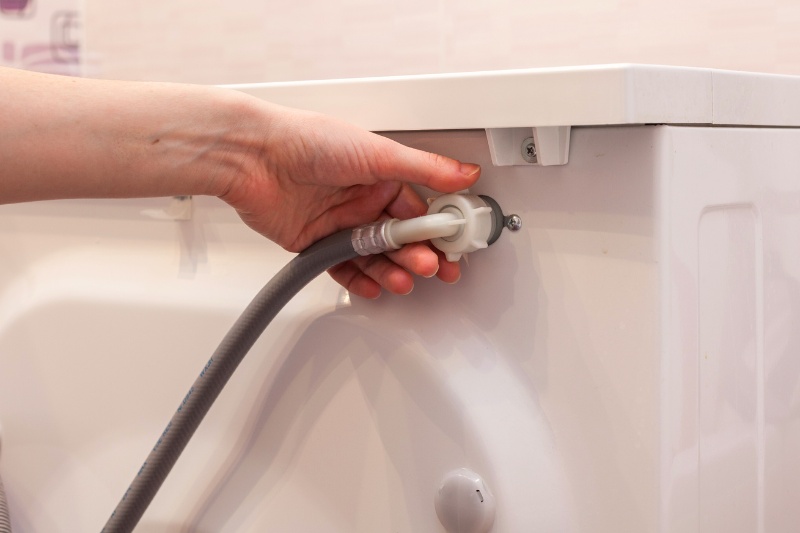
Front Loader vs Top Loader Water Usage
Most washing machines on the market in the UK are front loaders, meaning the door is on the front of the machine.
In many countries, top loaders, which have the door on the top of the machine, are more popular.
Top loaders typically use more water than front loaders. According to American appliance brand Maytag, the average top-loading washing machine with an agitator uses 19 gallons (72 litres) of water per use, while the average high-efficiency top-loading washing machine uses 13 gallons (49 litres) of water per use.
We found that the average front loader uses 48.6 litres of water per use, which is less than both a high-efficiency top loader (49 litres) and a regular top loader (72 litres).
What’s the Most Water-Efficient Washing Machine in the UK?
The most water-efficient washing machine we could find is the Hisense 7S Series WF7S1247BB, which uses just 3.92 litres of water per kg of laundry washed. It has a 12 kg drum capacity, so you can wash a lot of laundry while using just 47 liters per cycle.
While we consider the Hisense 7S Series WF7S1247BB to be the most water efficient model due to its low water usage per kg of laundry washed, the Hisense 3S Series WF3S8043BB3 actually uses less water per cycle—just 36 litres of water in total per cycle. However, this model has a smaller drum capacity (8 kg), so you can’t wash as much laundry at once.
Do Energy Ratings Reflect Water Usage?
Washing machine energy ratings are based solely on electricity usage, not water usage. Therefore, machines with better energy ratings don’t necessarily use less water.
However, according to our data, better energy efficiency ratings are correlated with more efficient water usage. This makes sense, as manufacturers who invest in making machines energy efficient are likely to also invest in making them water efficient.
Furthermore, the technology used to reduce energy usage sometimes has the byproduct of reducing water usage as well.
To check whether a washing machine uses water efficiently, check the product details to find out how much water it uses per cycle.
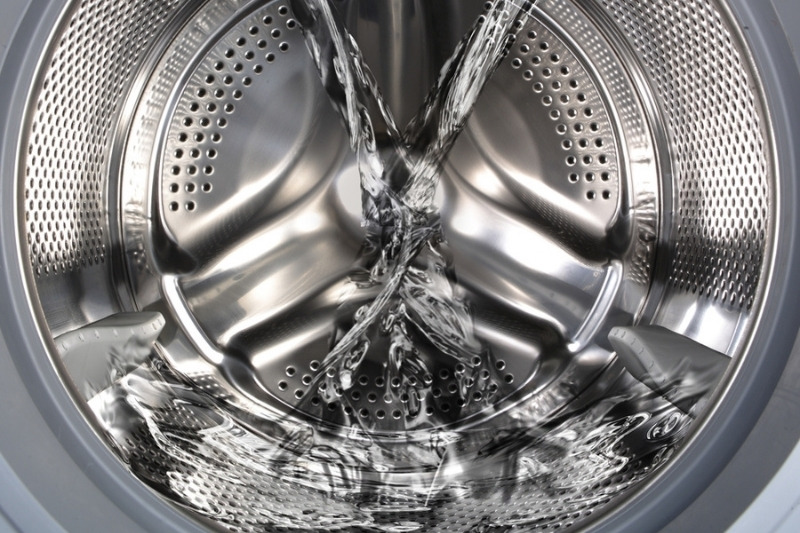
How Else Can We Save Water When Doing Our Laundry?
In addition to switching to a more efficient machine that uses less water per cycle, you can also reduce water consumption by running fuller loads each time you do your laundry.
If you do need to only wash a few items, choose a half-load setting on your machine if one is available. This will ensure that only a necessary amount of water is used. If the items can wait for a full-sized load, then this is preferable.
Using your machine less often also helps to lower water consumption, saving you money and helping the planet.
Synthetic wash cycles tend to use more water to avoid creasing, so it may be worth using cotton wash cycles as much as possible and then grabbing the iron to do some manual crease control afterwards.
Finally, avoid using the extra rinse setting unless absolutely necessary.

In The Wash is your guide to the best laundry and cleaning products, tips and tricks. Our mission is to solve the UK’s cleaning and laundry dilemmas!
